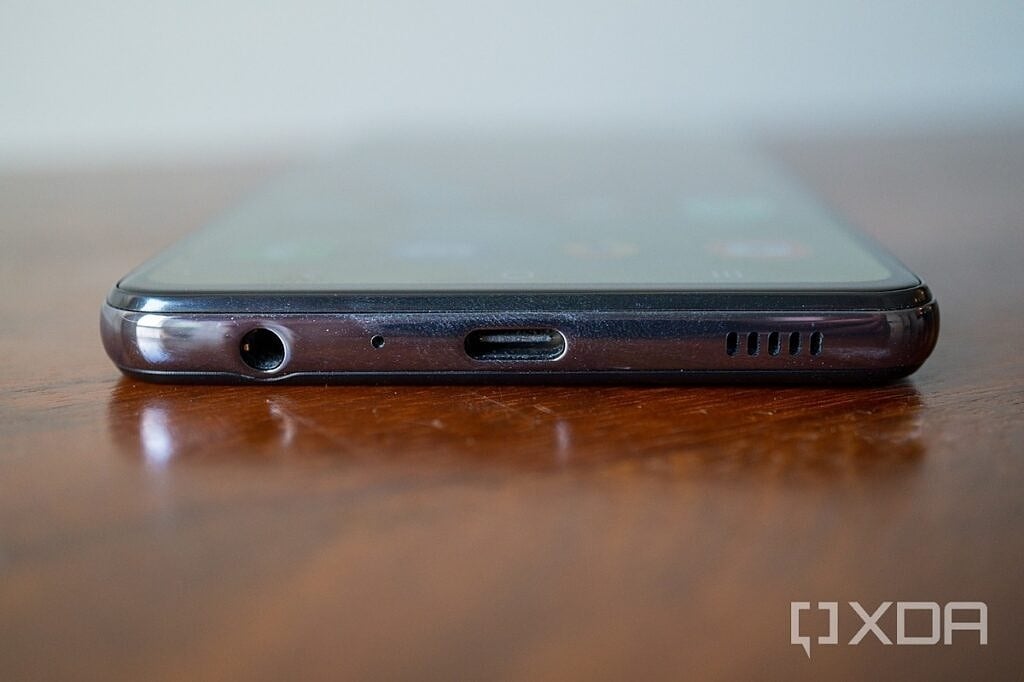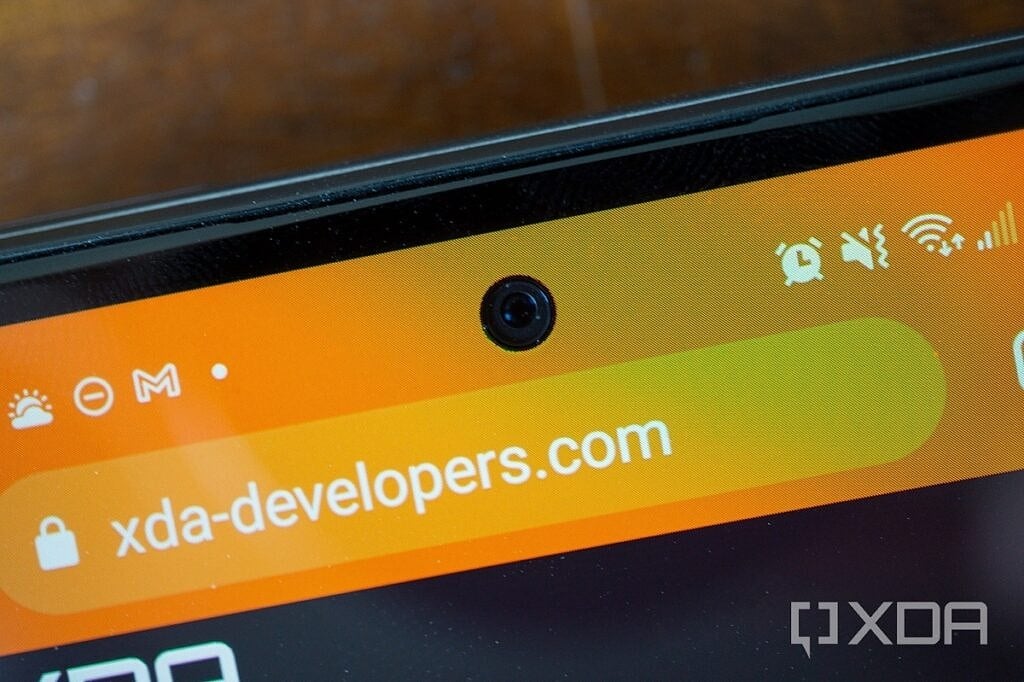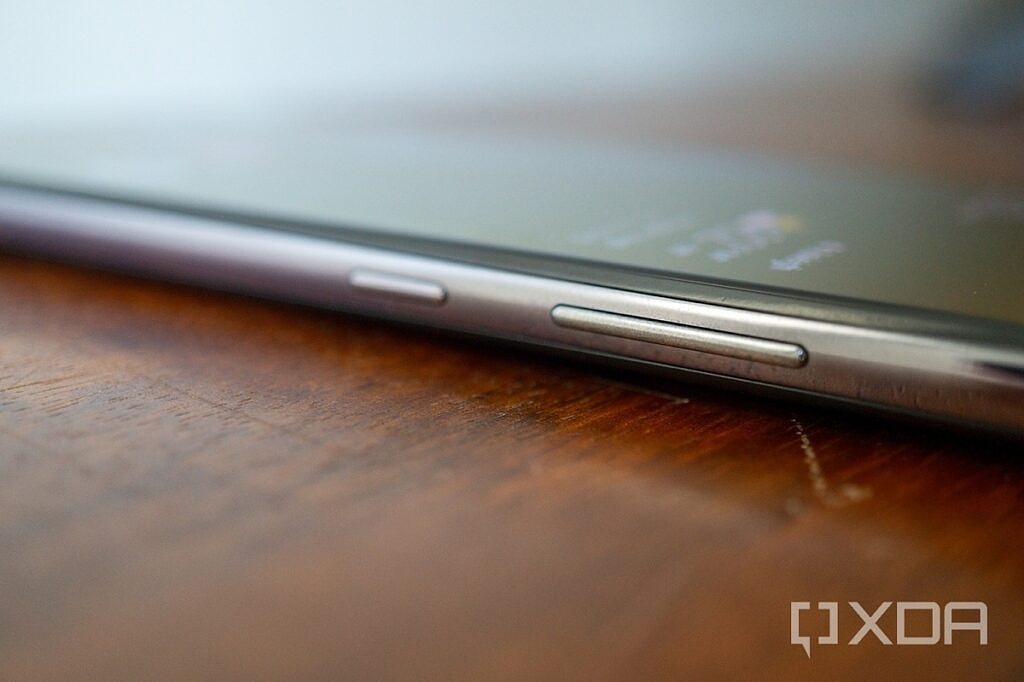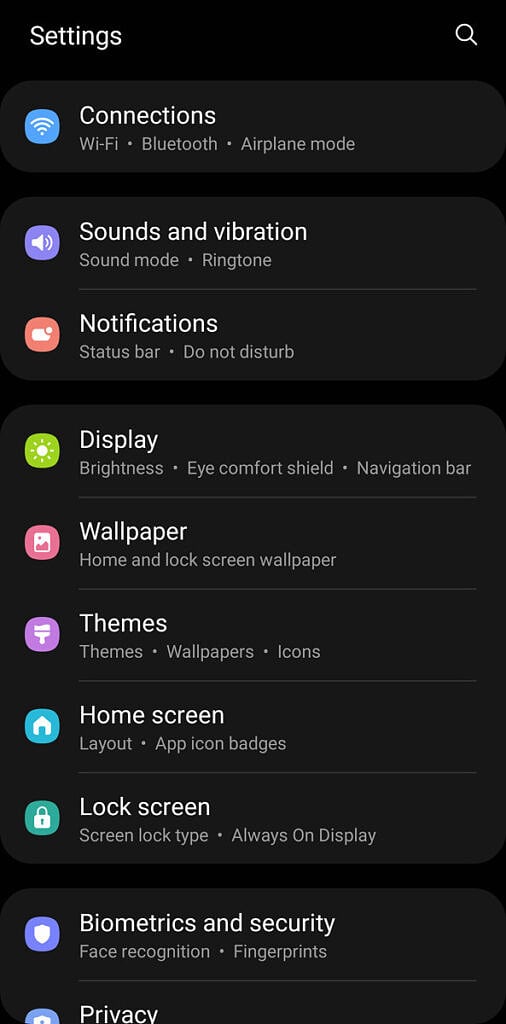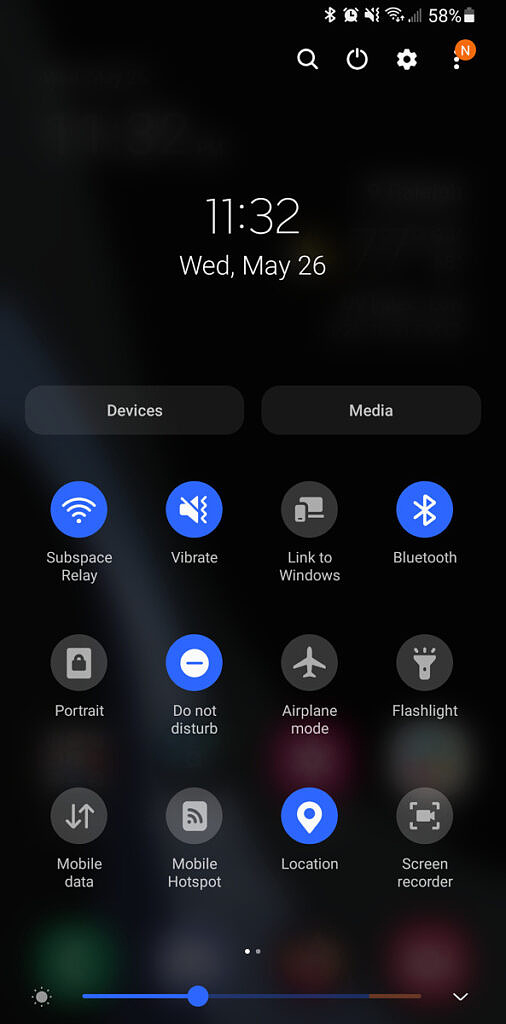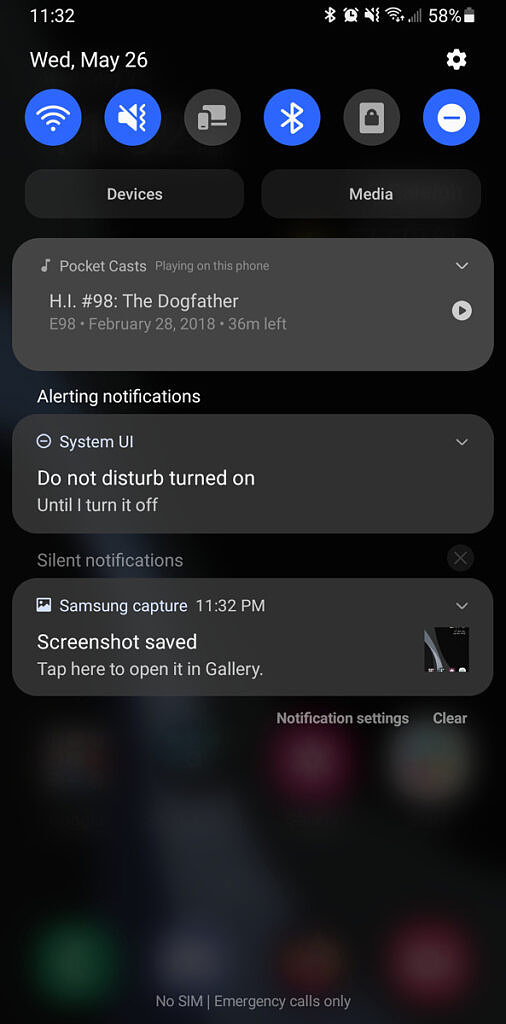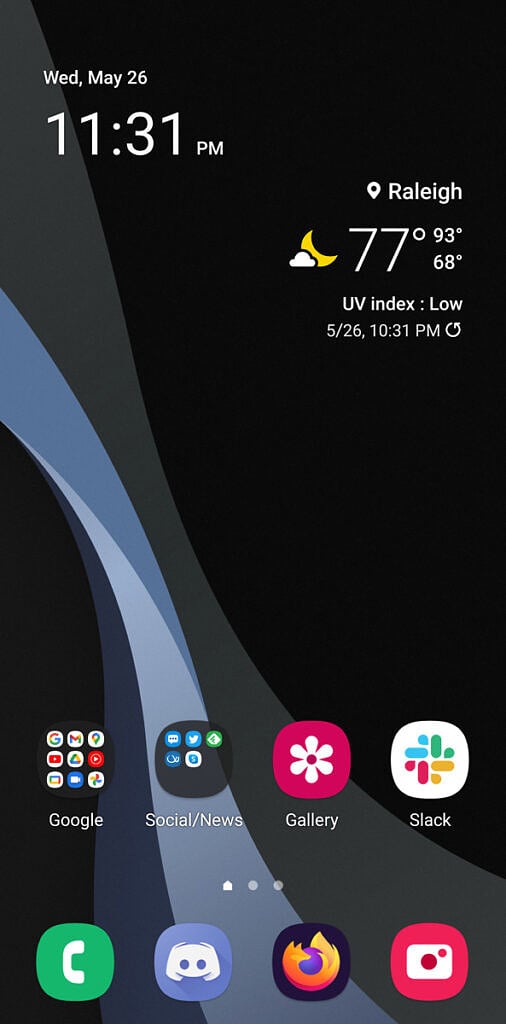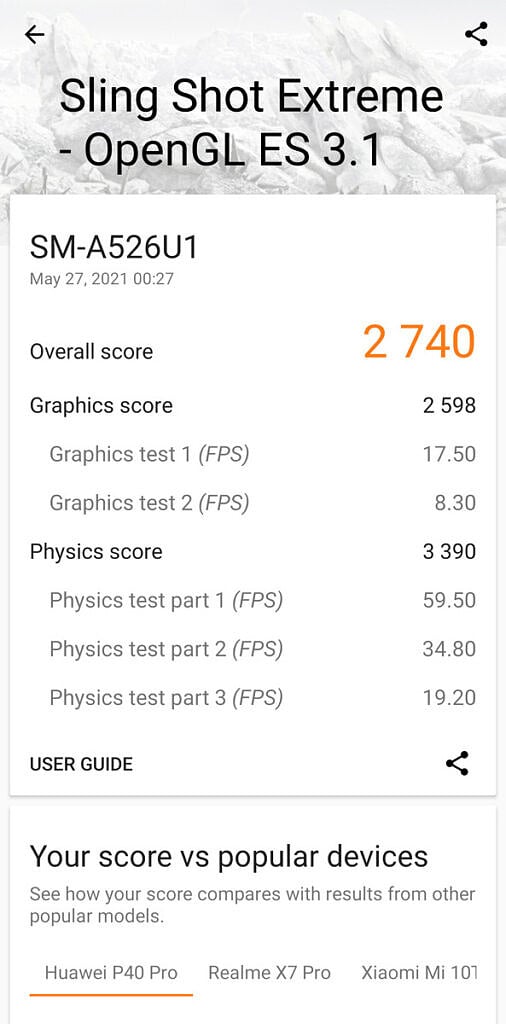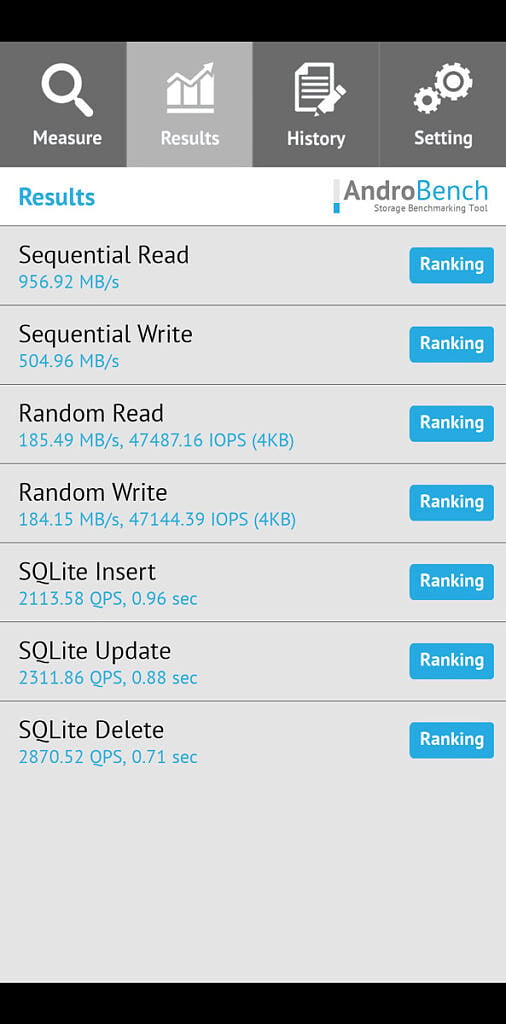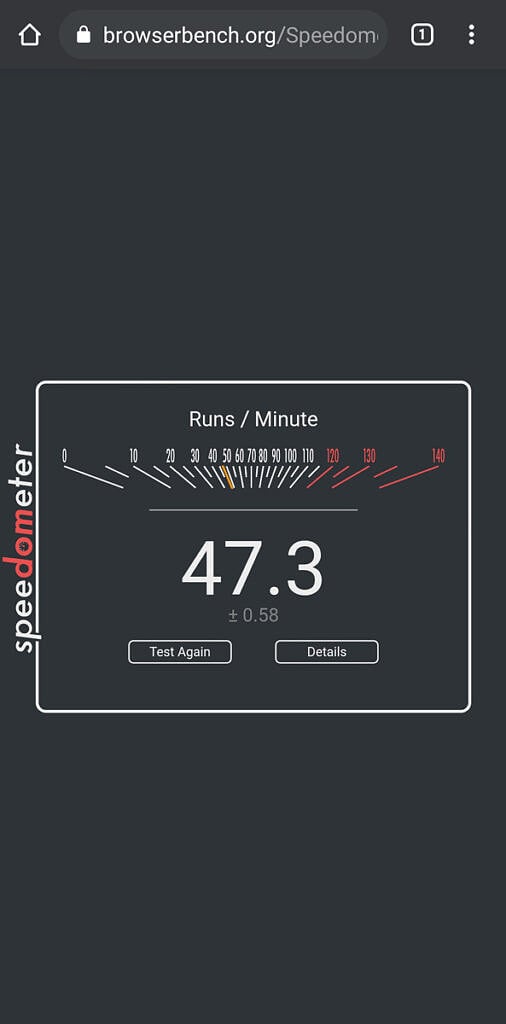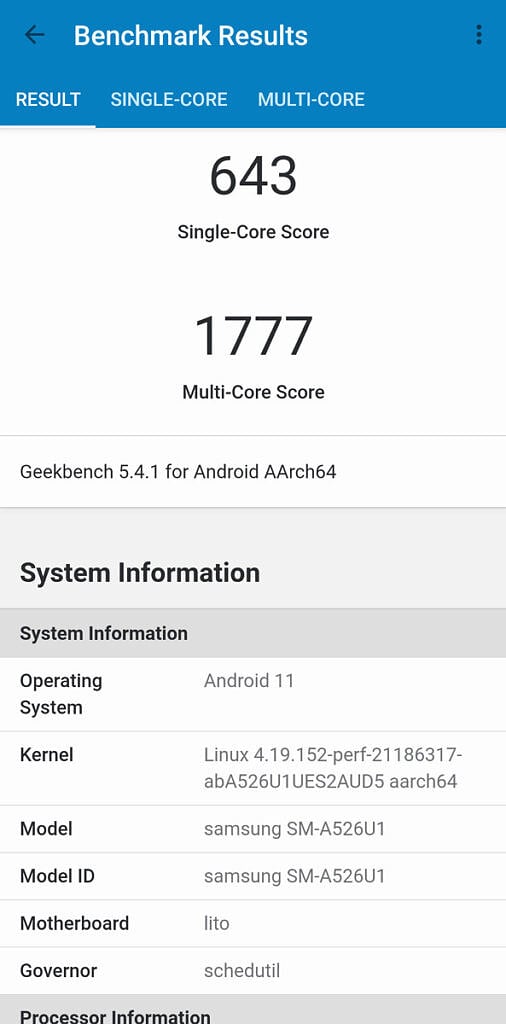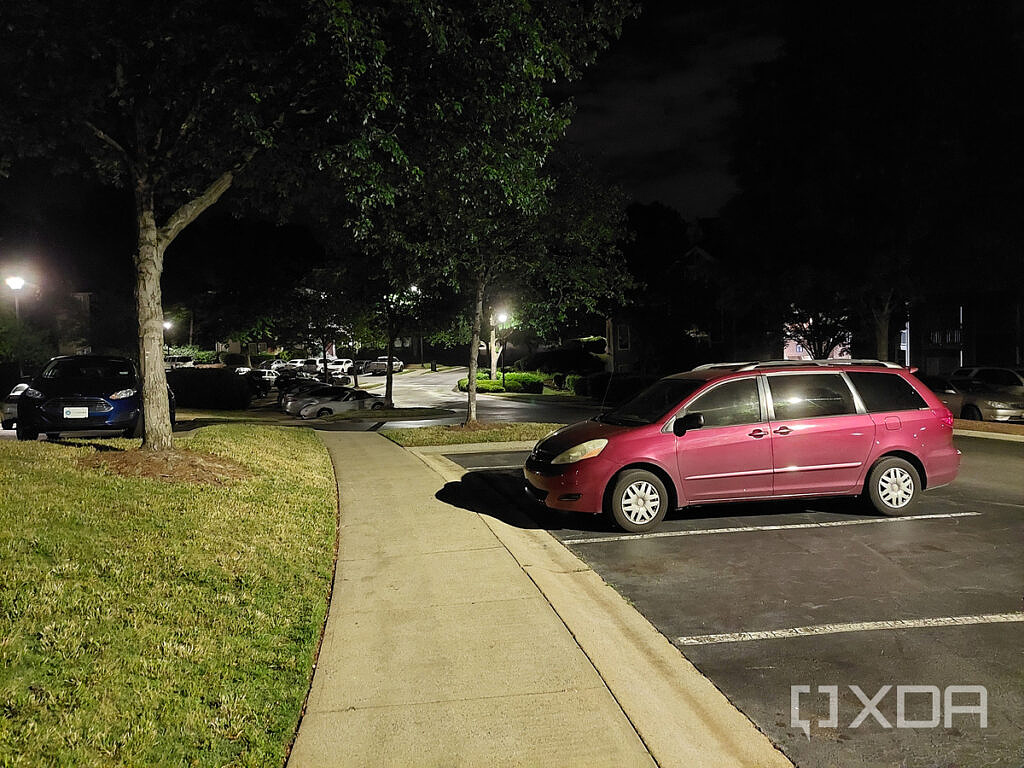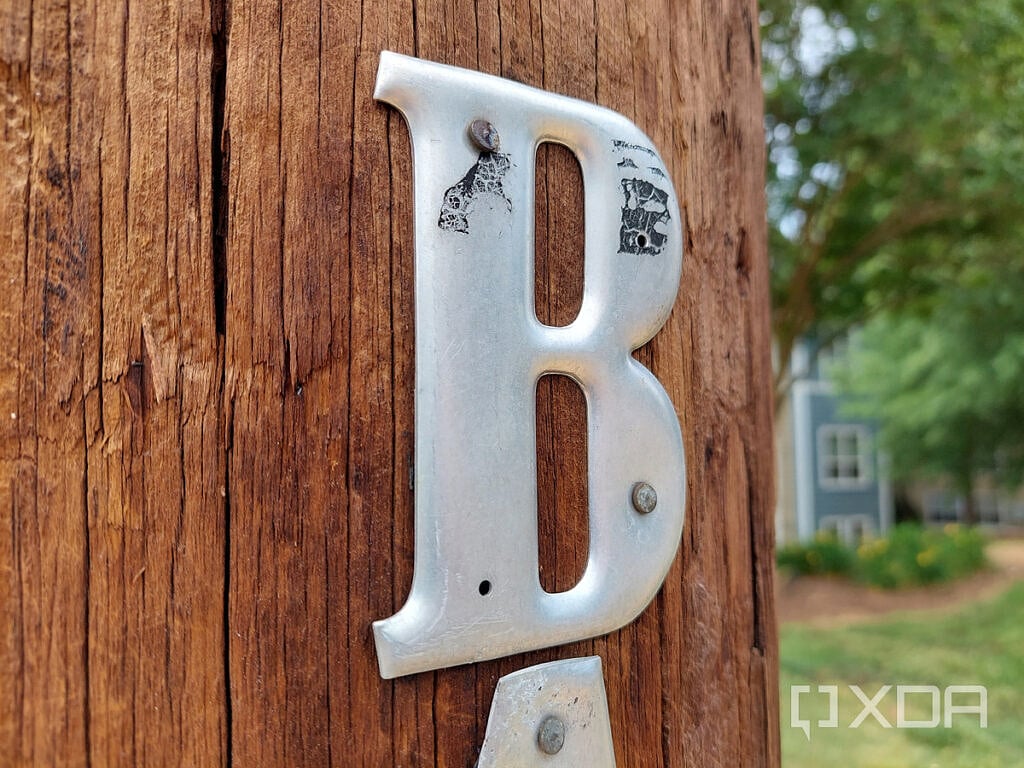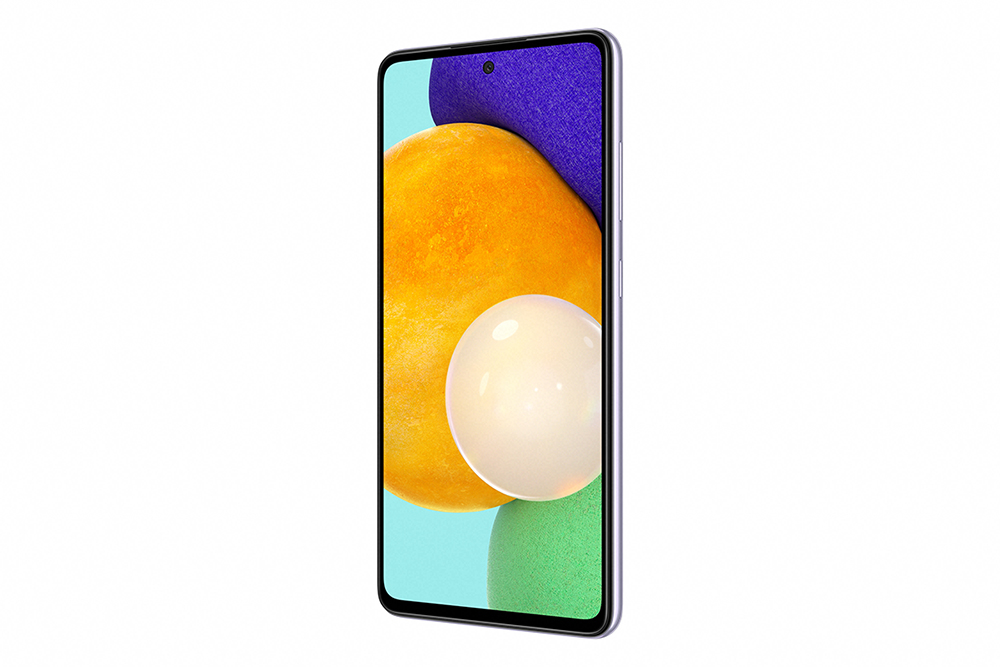The Galaxy A50 series has been one of Samsung’s bestsellers over the past few years. Priced in the $400-$500 range, it’s the perfect middle ground between super cheap phones and expensive flagships. While devices like the Galaxy Note 20 Ultra and Galaxy Z Flip were making headlines during 2020, last year’s Galaxy A51 was outselling just about every other Samsung product. There was never much doubt that Samsung would keep the excitement going this year, and sure enough, the Galaxy A52 was officially revealed in March (alongside the pricier A72).
Everything from the display to the internal hardware has been upgraded in the Galaxy A52, and this time there are two distinct versions. The Galaxy A52 5G has been designed for 5G markets like the United States and Europe, while the 4G model is being sold in the rest of the world. Check out our separate review of the Galaxy A52 4G model if that’s the version available in your region.
I’ve been using the Galaxy A52 5G for a while now, and unless Google or OnePlus surprises us later this year, I think this is the best budget 5G phone we’re going to get in 2021.
| Specification | Samsung Galaxy A52 5G |
|---|---|
| Build |
|
| Dimensions & Weight |
|
| Display |
|
| SoC |
|
| RAM & Storage |
|
| Battery & Charging |
|
| Security | In-display fingerprint scanner |
| Rear Cameras |
|
| Front Camera | 32MP f/2.2, FF |
| Ports |
|
| Audio | Stereo speakers with Dolby Atmos |
| Connectivity |
|
| Software | Android 11, One UI 3.1 |
About this review: I received the Galaxy A52 5G on loan from Samsung USA for a review. I’ve used the device for a little over two weeks. Samsung was not involved in any part of this review.
Design and Build
The Galaxy A52 5G mirrors the hardware design of many other recent Samsung phones, with its center hole-punch front camera, minimal screen bezels, and plastic exterior. I’m happy to see the glossy plastic finish from the Galaxy A51 is gone, replaced with a matte plastic casing similar to the Galaxy Note 20 and Galaxy S21. Some may prefer glass or plastic that looks like glass, but the matte finish keeps fingerprints and smudges to a minimum.
Unlike the Galaxy S21 and Note 20, the Galaxy A52 5G is also using plastic for the device frame and hardware buttons (volume and power). This is the cheapest feeling part of the phone, and at least on my unit, the glue holding the frame together doesn’t seem too strong. This won’t matter if you buy a good case, but the all-plastic design is a constant reminder that the Galaxy A52 is not a flagship smartphone.
The front of the Galaxy A52 has a 6.5-inch AMOLED screen, which is larger than the display on the base Galaxy S21 but smaller than the one found on the S21+, S21+ Ultra, Note 20, and Note 20 Ultra. It’s a great size for watching videos, and there’s more than enough room to comfortably type messages. The 120Hz refresh rate also helps apps and games feel super smooth. However, like all larger phones, reaching the corner of the display with one hand is just about impossible.
Volume and power buttons are located on the right side, which feel a bit mushy but aren’t terrible. The bottom has a single speaker grille, a USB Type-C port for charging and data transmission, and a 3.5mm headphone jack. There’s a 15W wall charger included with the Galaxy A52 5G, and the phone reaches the same 15W speed with standard Qualcomm Quick Charge and USB Power Delivery (USB-PD) chargers. The Galaxy A52 is advertised as supporting up to 25W charging speeds, but I was only able to reach that speed with my Samsung Fast Charging wall plug.
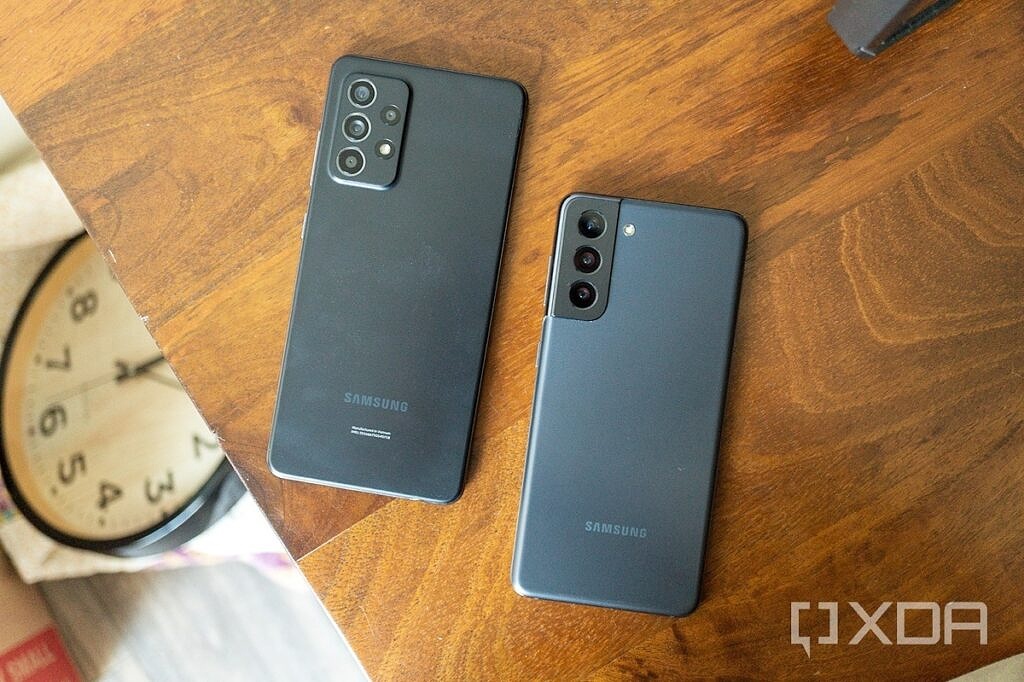
Galaxy A52 5G (left) next to Galaxy S21 (right)
Finally, the top of the Galaxy A52 has a tray for SIM and microSD cards. Like other Samsung phones, the Galaxy A52 5G doesn’t support Android’s adoptable storage, so the microSD card can only be used to store data with applications that explicitly support external storage. For example, you can keep music files or offline Netflix content on a microSD card, but you can’t move apps to it.
The 120Hz screen is great to have on a $500 phone
The hardware and build quality of the Galaxy A52 could be a bit better, but the minor issues are easy enough to ignore with a case. The 120Hz screen is great to have on a $500 phone, and because it’s a flat display, you won’t have any problem installing a screen protector. I’m also happy to see that Samsung hasn’t ripped the headphone jack out of its A-series phones yet — wired audio is still useful in many scenarios, from plugging into older cars to playing podcasts on long-haul flights.
Software
If you’ve used any Samsung phone over the past few years, you won’t find any surprises with the Galaxy A52. It ships with Android 11 and Samsung’s One UI 3.1 software on top. The phone will also receive three “generations” of Android upgrades, which should mean Android 12, 13, and 14 (assuming Google’s update schedule stays roughly the same). That’s a longer support period than just about any other phone in this price range, besides the latest iPhone SE.
The Galaxy A52 will also receive three generations of Android upgrades, which should mean Android 12, 13, and 14
Android 11 is the latest stable version of Google’s mobile operating system, with updated media controls, everything in the Unicode Emoji 13.0 set, temporary permissions, and many under-the-hood changes that keep your phone secure. Samsung’s One UI 3.1 software sits on top, changing most of Android’s interface and adding even more features. Samsung has its own home screen launcher, camera app, email client, gallery/file manager, web browser, and so on — these can all be replaced with third-party alternatives (or the usual Google versions) if you don’t want to use them.
The software experience on the Galaxy A52 is identical to what you would get on Samsung’s high-end phones, like the Galaxy Note 20 or Galaxy S21 series, with a few exceptions. Samsung DeX, the feature that turns your phone into a desktop environment when connected to a monitor (or TV or PC), isn’t available on the Galaxy A52. This is presumably due to the slower hardware compared to flagship phones, but the Snapdragon 720G chipset is about as fast as the Exynos 9611 in the Galaxy Tab S6 Lite, and that device does support DeX.
Most of the changes Samsung makes to Android are improvements, but there are a few downsides to One UI. Samsung doesn’t support seamless updates on any of its phones, so you can’t use your phone while system updates (like monthly security patches) are installed. There’s also the same overload of advertisements in system apps that’s common on other Samsung phones, especially in the United States.
If you like Samsung’s usual software experience, you’ll like the Galaxy A52 5G. If you prefer a more stock-like build of Android, the Google Pixel 4a 5G or ZenFone 7 might be a better purchase.
Performance and Battery Life
I was impressed with the Galaxy A52 5G’s performance. I’ve been using the (Qualcomm) Galaxy S21 as my primary phone for a few months, and I didn’t notice much of a difference in speed and responsiveness going to the Galaxy A52. Thanks to the Snapdragon 750G chipset and 6-8GB RAM (depending on which model you get), there’s very little delay when opening apps, and everything from typing emails to watching YouTube works well.
The main drawback to the Snapdragon 750G chipset is with gaming performance — titles like Fortnite and Genshin Impact will work, but they won’t be quite as smooth as they would be with a flagship Android phone. If you’re on a tight budget and gaming is a priority, the iPhone SE 2020 is around the same price and has a much faster GPU. I also noticed Android Auto was slower on the Galaxy A52 than it was on flagship Android phones.
If you’re interested in benchmarks, the Galaxy A52 5G scores a 47.3 on the Speedometer 2.0 web benchmark (with Chrome 90), and 2,740 in 3DMark’s Sling Shot Extreme test. In Geekbench 5, the phone gets a single-core rating of 643 and 1,777 for the multi-core test (full results here). AndroBench reports sequential storage read speeds of 956 MB/s, and seq. writes of 504 MB/s. Across all benchmarks, a higher number is better.
Network performance on the Galaxy A52 5G was excellent in my testing
Network performance on the Galaxy A52 5G was excellent in my testing. The phone’s Snapdragon X52 modem supports 5G on all major US carriers, though the phone only connects to sub-6GHz networks. I used the Galaxy A52 5G on T-Mobile’s network (through Ting, an MVNO), and I had a stable LTE or 5G connection wherever I went. The fastest speeds I saw were around 214 MB/s down and 14 MB/s up on 5G in downtown Raleigh.
Like most Snapdragon 700-series smartphones, battery life was another highlight of the Galaxy A52 5G. The phone will easily last two days on a single charge with normal usage, thanks to the power-efficient chipset and large 4,500mAh battery. I don’t think anyone will have a reason to complain about battery life with this phone.
Camera
The competition for camera quality has been tough in this price segment ever since Google released the first Pixel ‘a’ phone in 2019. The Galaxy A52 5G has a 64MP f/1.8 primary camera, but it combines pixels for an effective resolution of 16MP. There’s also a 12MP f/2.2 ultra-wide lens, a 5MP f/2.4 macro camera, and a 5MP depth sensor that aids the other lenses.
Uncompressed Photo Samples from the Samsung Galaxy A52 5G
I was impressed by the Galaxy A52’s photo quality. It has the same image processing as other Samsung phones, which sometimes oversaturates colors and bumps up contrast, but most photos turned out excellent. Images from the wide-angle lens looked noticeably worse than images from the main camera, but that’s standard for budget phones (and even many flagships).
However, the Galaxy A52 5G doesn’t have a telephoto lens, so image quality isn’t great if you zoom in farther than 3x or so. I would have preferred a zoom lens over the 5MP macro camera — as much as I love taking macro photos, the resolution isn’t high enough for high-quality photos.
Conclusion
It wasn’t too long ago that the only worthwhile budget phones in the United States were $100-$200 Motorola devices or old iPhones. This finally started to change with phones like the Pixel ‘a’ series, the updated iPhone SE, and Samsung’s recent A50 phones. Last year’s Galaxy A51 was a great phone, and the Galaxy A52 5G improves upon it in almost every way. The phone is faster, the screen now runs at a super-smooth 120Hz refresh rate, and 5G support has arrived. Samsung’s promise of three major OS updates is also better than you’d get with any other Android phone in this price range (tied with Google’s Pixel devices).
This phone’s main selling point is the 5G connectivity, since the Galaxy A52 is one of the cheapest devices in the United States that can connect to 5G networks. The Moto One 5G Ace is less expensive, at around $380, but I wouldn’t recommend that phone at almost any price due to Motorola’s poor track record with software support. Google’s Pixel 4a 5G is the main Android competition here, with a $50 premium over the Galaxy A52 5G. Motorola and Google’s phones only work with sub-6GHz 5G, which is far more widely available than millimeter-wave 5G (see our 5G explainer for more details), but the Galaxy A52 5G works with both network types.
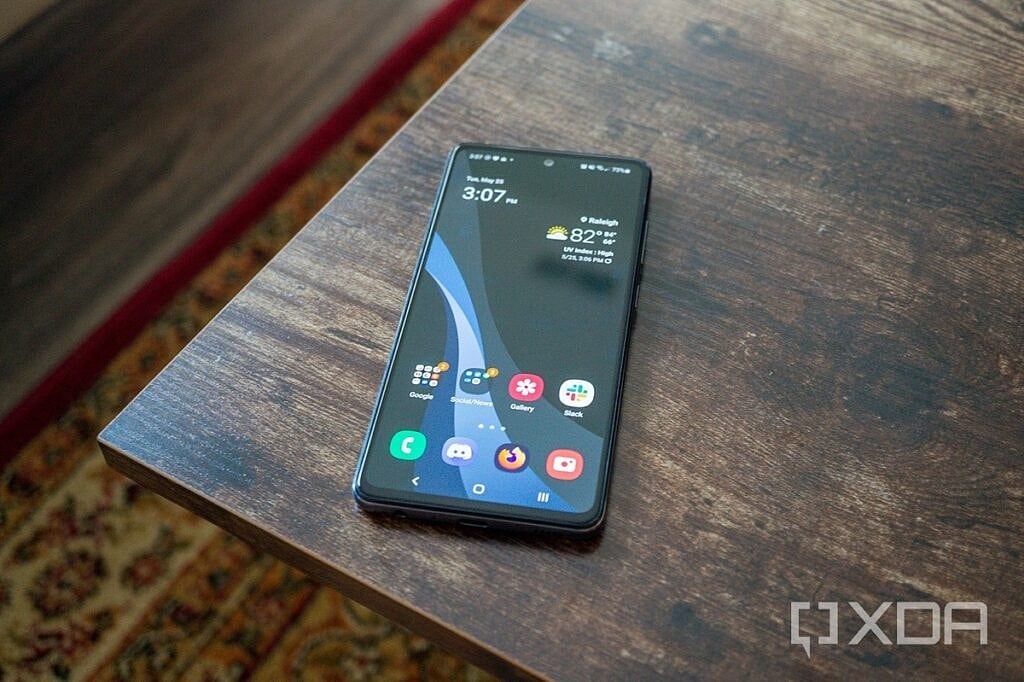
I didn’t find much to complain about with the Galaxy A52 5G. The build quality could be better, and I would have preferred a telephoto lens over the nearly-useless 5MP macro. Samsung’s software also remains as polarizing as ever — while some (like me) generally prefer One UI over stock Android, it’s definitely not a perfect experience. The abundance of features can feel overwhelming, and the advertisements in system applications like Samsung Pay and Weather are still inexcusable.
Overall, the Galaxy A52 5G is one of the strongest budget phones we’ve seen yet out of Samsung, especially in the United States. It’s a great package for the typical price of $500, and if you can get it on sale, that’s even better.
Samsung Galaxy A52 5G
- The Galaxy A52 5G is one of the best budget Android phones you can buy right now, with a 120Hz screen, 5G connectivity, and Android 11.
The post Samsung Galaxy A52 5G Review: The King of Budget 5G Phones in 2021 appeared first on xda-developers.

